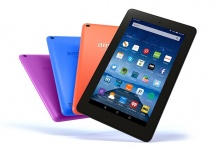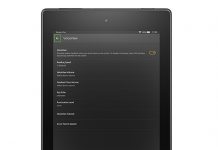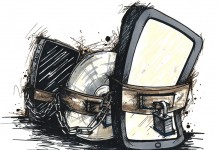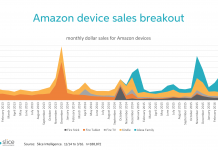
Digitimes Research reports, that global shipments of ereaders are expected to reach no more than 2 million units in the first quarter of 2012. It’s down from as much as 9 million in Q4 2011.
The major reason of such a big decline is the success of Kindle Fire and Nook Tablet. One could say “success of tablets”, but actually this is a new circumstance.
Since the introduction of the Nook Color there is no clear distinction any more between an ereader (it used to have an e-ink screen) and a tablet (multi-purpose, color-screen). Nook Color is a single-purpose device with a color screen.
What’s even more important, Kindle Fire and both color Nooks are highly associated with ebooks, because they were launched by ebookstores. Apparently they became an alternative not for those who wanted to buy a tablet, but those who wanted to buy an ereader.
Those devices, with customized (=limited) systems and strong association with ebookstores, create a lot of confusion. Experts call them “iPad killers”, marketers want people to read ebooks on them, and in the end there are many customers who think that Kindle Fire is a “Kindle with a color e-ink screen”.
Obviously, there is a question about cannibalization. It’s not an easy case, because, opposite to Apple, what really Amazon and B&N want to sell is content, not devices. The question is how many more users they now have (and how many of them are active). Customers who bought their color devices instead of iPad, didn’t move to the Apple ecosystem, and it’s a win.
Yearly shipments of ebook readers are expected to top 60 million units by 2015, according to Digitimes. Tablets are going to do much better. A December report from iSuppli shows, that their shipments are expected to rise to about 300 million units in 2015. The estimates will surely change as definitions of the “ereader” and “tablet” will evolve.

(Via Ebook Friendly » Tips & More.)

































The color reading devices like the Nook Color are optimized for the one content e-Ink devices don’t deliver, which is color magazines and other color content. They provide a similar service to PC- and tablet-based apps, but more closely tied in to the ebook stores. That was always the primary intent of those devices.
The fact that their OS allows them to access other apps and functions is a bonus, allowing consumers to consolidate a few other uses (such as games, web browsing, video, etc) into their purchase. But these devices are still limited, not quite having the flexibility or adaptability compared to the average tablet device.
In the end, this will create a wider range of products that can satisfy a wider range of consumers. It will also require other devices to improve their features (and, hopefully, prices) to compete with the best-sellers. For consumers, this should be a good thing.
I agree with everything you say, Steven. The only problem I foresee is that the bookstores are not open and access to them is controlled by the bookstores themselves.
I bought a Nook “tablet” to read books, and it works very well for that purpose. I would have purchased a more open device (likely at a more expensive price) if the Nook Tablet software had been available, but B&N is currently restricting access to that software for their own reasons.
I suspect that Amazon is better about this, but they are not offering me the format that I desire, and their software was missing features I expected.
Logan: True, the major online bookstores are mostly-closed environments. But as the other bookstores demonstrate a willingness to be more open, I think we’ll see the big bookstores creating more apps for other devices (at least the most popular OS’s) in order to capture part of the tablet market. It’s in their own best interests to expand platforms and features, to bring in more revenue;
Amazon and B&N have apps that work in other environments (not all, admittedly, and I know that with B&N’s app, books are accessible but not magazines). The only thing holding them back is the effort required to keep those apps current on rapidly-evolving platforms like Android and iOS. That’s why they initially started with their own, controllable hardware.
But if they think they can keep up, they will, to bring in that money.
“The color reading devices like the Nook Color are optimized for the one content e-Ink devices don’t deliver, which is color magazines and other color content. They provide a similar service to PC- and tablet-based apps, but more closely tied in to the ebook stores. That was always the primary intent of those devices.”
I agree. Unfortunately, many people mistake them as tablet computers. That said, I know a lot of people who has Kindle Fire and love it although they were expecting something like the iPad. It is still too early to tell if these controlled ecosystems are going to last, hence the competition. And like Steven said, this is a good thing for us consumers. Btw, visit my site here: cheap kindle covers . Thanks!